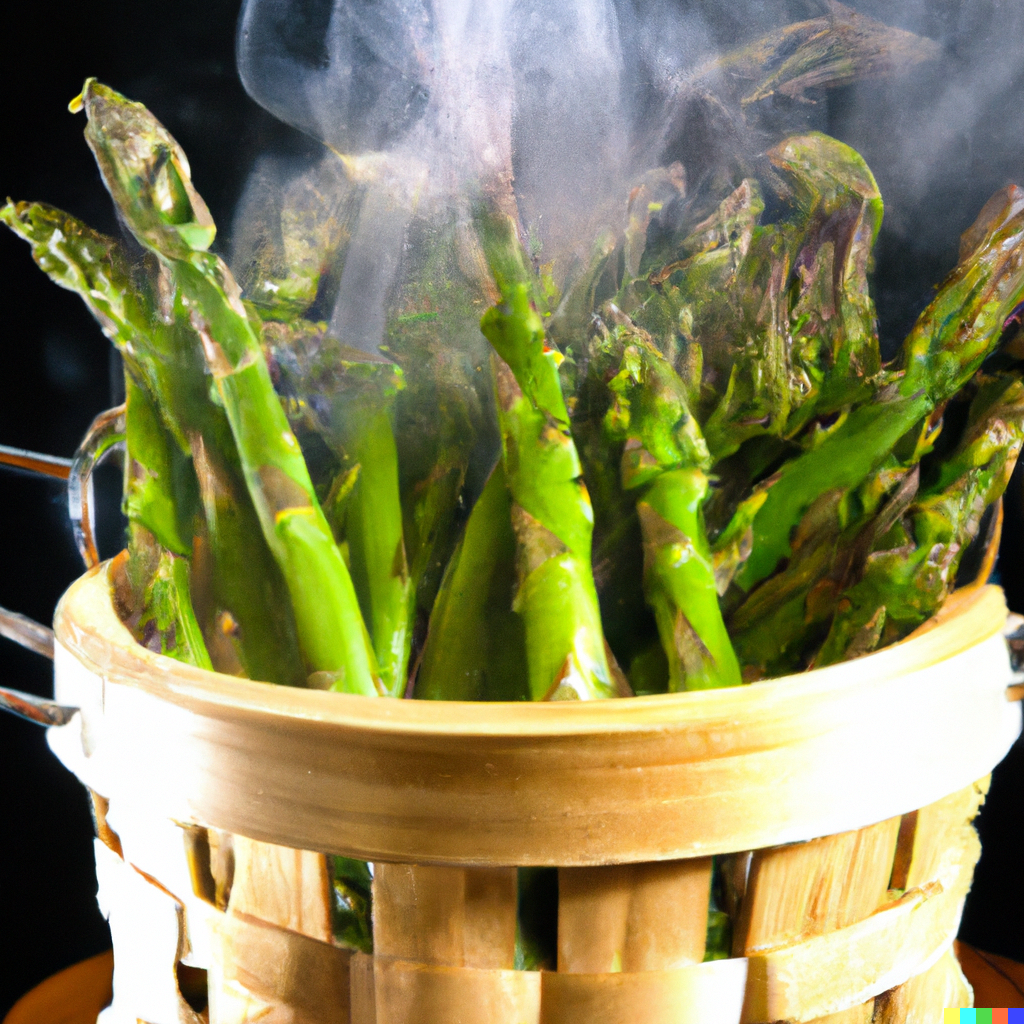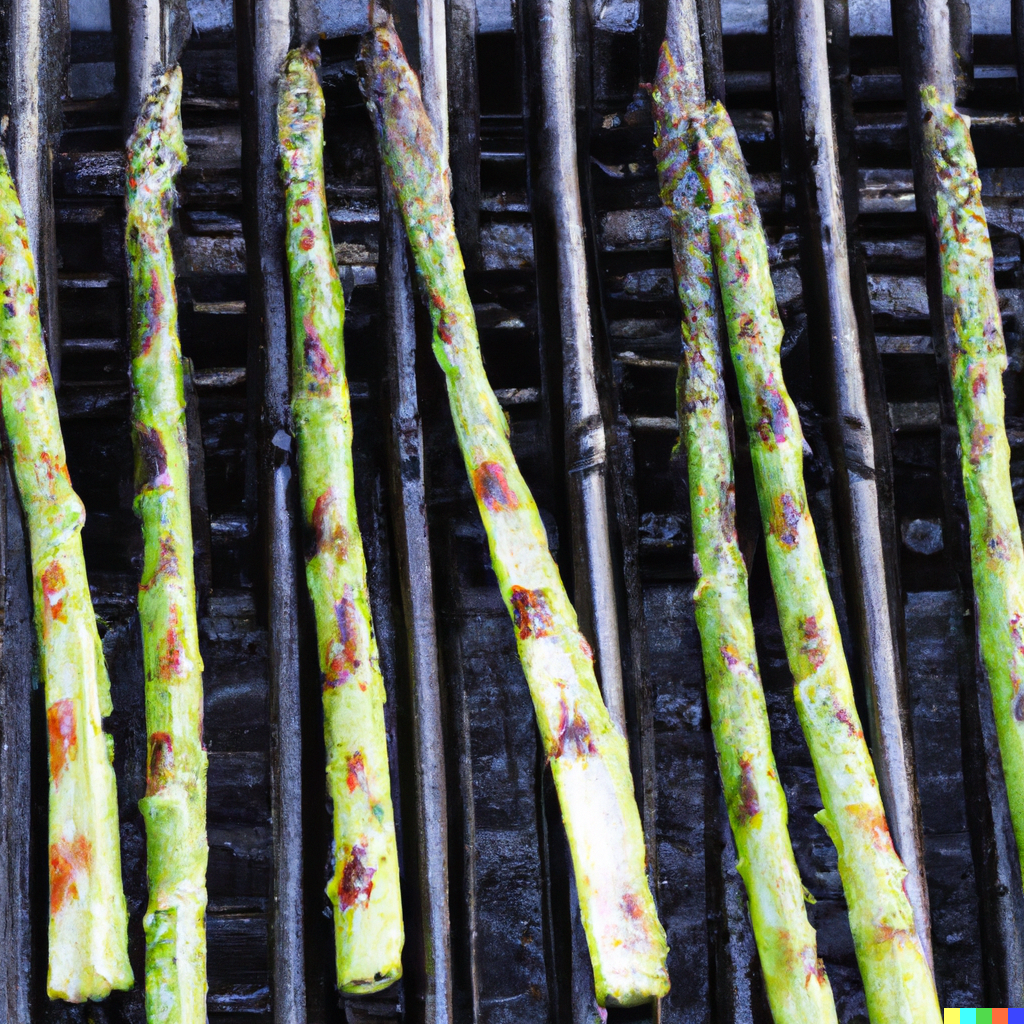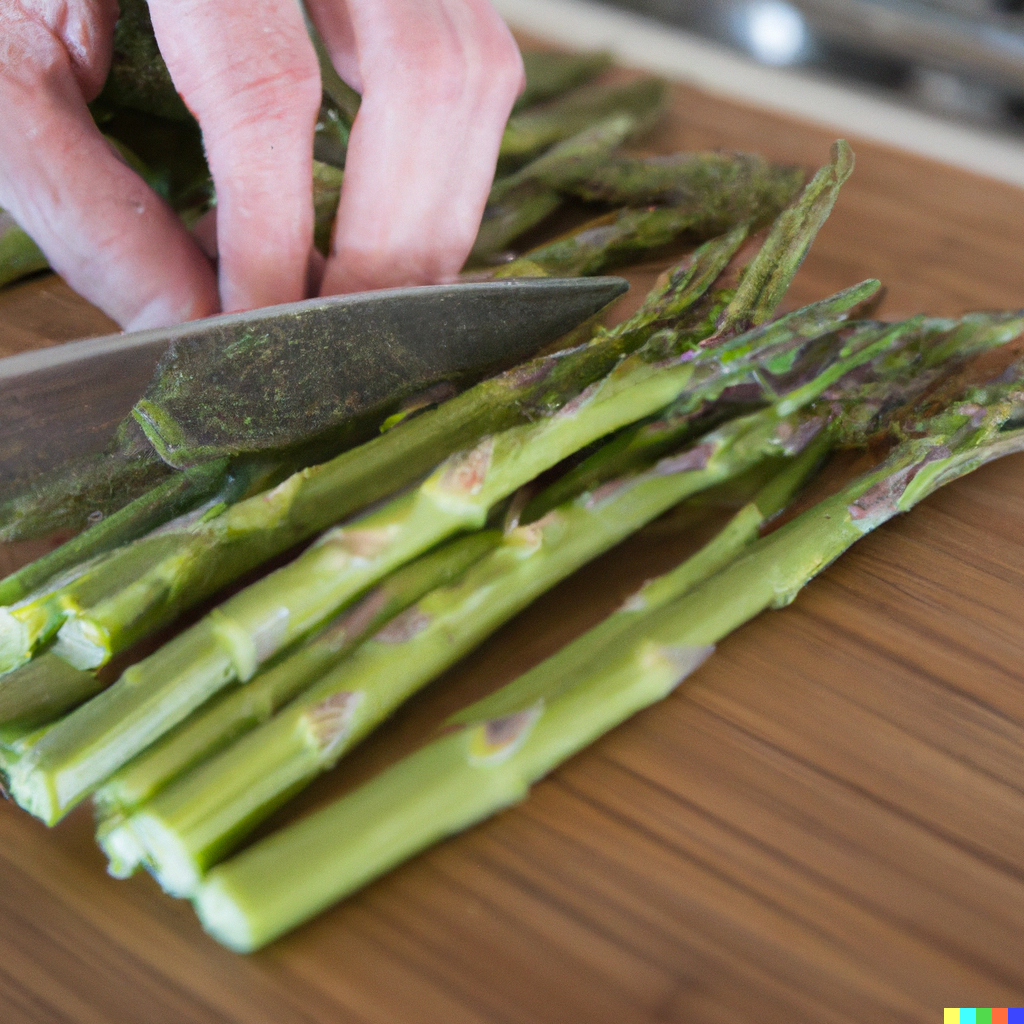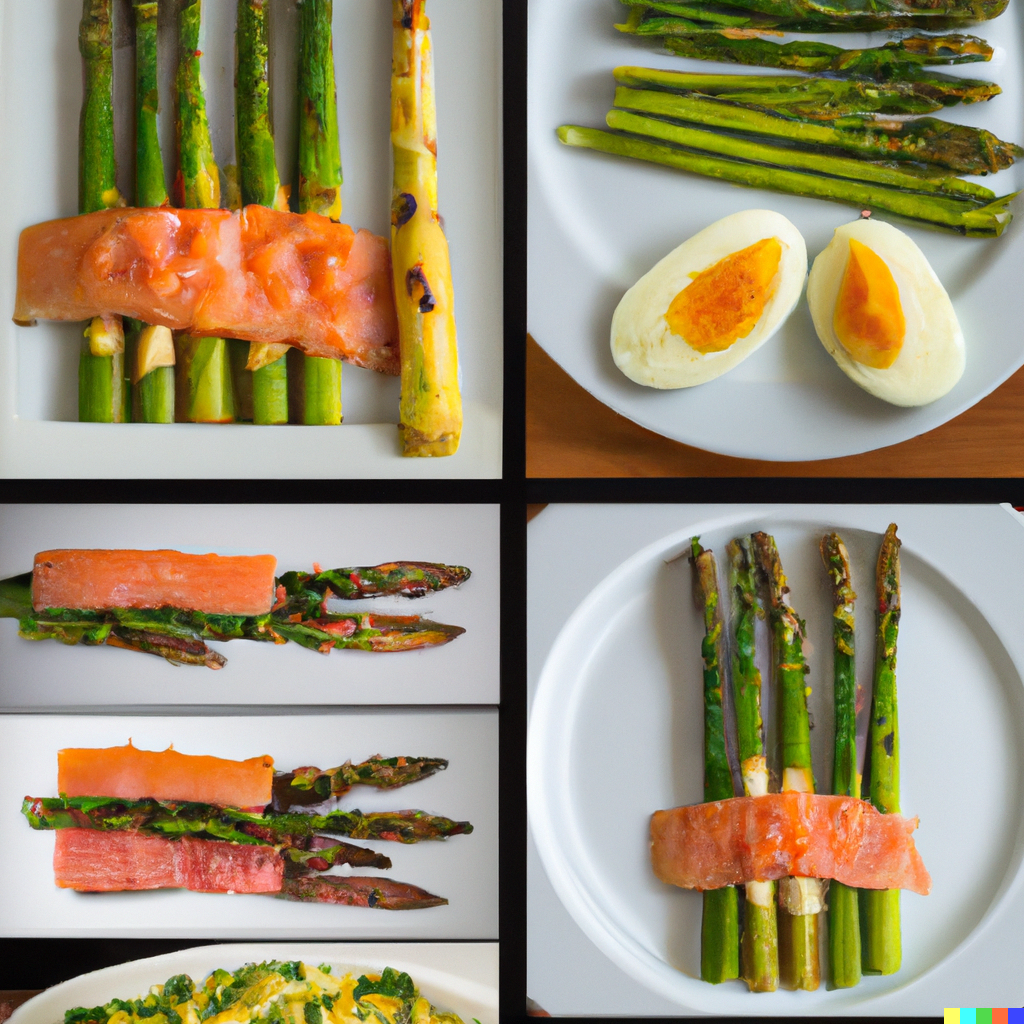Asparagus, known for its slender stems and subtle taste is an healthy vegetable that can enhance any dish. Whether you’re a cook or just starting out in the kitchen learning how to prepare asparagus can open up a world of opportunities. In this blog post we will explore the ins and outs of getting ready, cooking, seasoning and presenting asparagus to help you whip up meals that showcase the splendor of this lively veggie. From picking out the asparagus to experimenting with cooking techniques and serving ideas this guide will give you the knowledge and expertise needed to cook asparagus like a pro. So lets get started on our adventure, with asparagus taking center stage

Getting to Know Asparagus; Nutrients, Types and Choosing
Asparagus not adds flavor to dishes. Also offers a nutritional boost. Before we dive into cooking methods it’s important to grasp the health benefits, different types available and how to select top quality asparagus for your recipes.
Health Benefits of Asparagus
Asparagus is low in calories in vital nutrients, like vitamins, minerals and antioxidants.
Here are some important health benefits of asparagus;
Vitamins; Asparagus packed with vitamins A, C, E and K which are essential, for health, immune system support and skin wellness.
Minerals; Asparagus provides key minerals like potassium, folate and manganese. Potassium helps in managing blood pressure folate supports cell growth and manganese is beneficial for metabolism and bone strength.
Fiber; Asparagus contains fiber that aids in digestion supports gut health and contributes to weight management.
Antioxidants; Asparagus is rich in antioxidants such as beta carotene, lutein and zeaxanthin. These antioxidants help protect cells from damage caused by radicals and reduce the risk of diseases.
Types of Asparagus
Asparagus comes in types with characteristics;
Green Asparagus; this popular variety is known for its color and slightly nutty taste. It’s versatile in cooking and easily accessible.
White Asparagus; Grown underground to shield it from sunlight exposure white asparagus has a color, with a flavor and tender texture.
Purple Asparagus;
When it comes to asparagus its purple hue sets it apart from the green variety and offers a slightly sweeter taste. People often value it for its properties.

How to cook Asparagus
4
servingsIngredients
1 pound asparagus spears (thicker spears work well for roasting)
1 – 2 tablespoons extra virgin olive oil
Kosher salt (to taste)
Freshly ground black pepper (to taste)
- Optional additions:2 cloves garlic, minced
1 tablespoon lemon juice
Directions
- Boiling Asparagus
Cooking asparagus, by boiling is an efficient method. Here’s a simple guide;
1. Fill up a pot with water. Bring it to a boil. Sprinkle in some salt for flavor.
2. Add the asparagus into the boiling water. Cook for 2 3 minutes until its tender but still has a slight crunch. Avoid overcooking to prevent mushiness.
3. Once done transfer the asparagus to a bowl of ice water to stop the cooking process and maintain its green hue.
4. Drain the asparagus pat it dry and serve it on its own or use it in dishes.
- Steaming Asparagus
Steaming is a cooking method that helps preserve the taste and nutrients of asparagus. Follow these steps for steaming;
1. Fill a pot with some water bringing it to a simmer.
2. Place the asparagus in a steamer basket or heatproof colander, above the simmering water.
3. Cover the pot. Steam the asparagus for around 4 6 minutes until tender adjusting based on stalk thickness.
Once the asparagus is cooked take it out of the steamer. Transfer it onto a serving plate. Sprinkle some salt, pepper or your preferred seasonings on top.
- Sauteing Asparagus
Sauteing is a tasty method to cook asparagus while adding a hint of caramelization. Here’s how to saute asparagus;
Heat a skillet or frying pan on heat and add a bit of olive oil or butter.
Once the oil is hot place the trimmed asparagus in the pan in a layer. Avoid overcrowding to ensure cooking.
Saute the asparagus for around 4 6 minutes tossing occasionally until tender and slightly browned.
Season, with salt, pepper or other desired seasonings. Sautéed asparagus can be served as a side dish. Used in pasta dishes, risottos or stir fries.
- Grilling Asparagus
Grilling gives asparagus a smoky and charred taste, perfect, for cooking. Follow these steps to grill your asparagus;
Preheat the grill to heat.
Coat the trimmed asparagus with olive oil, salt and pepper for even seasoning.
Place the seasoned asparagus directly on the grill grates and cook for about 4 6 minutes while turning occasionally until tender and slightly charred. Take the grilled asparagus off the grill. Serve it away. Grilled asparagus is a match, with grilled meats salads or on its own as a side dish.
- Cooking Asparagus in the Oven
Roasting enhances the sweetness of asparagus. Gives it a delicious caramelized taste. Here’s how you can roast asparagus;
Preheat your oven to 425°F (220°C).
Place the asparagus on a baking sheet. Drizzle some olive oil over them. Season with salt, pepper or your favorite herbs and spices.
Mix the asparagus well to ensure they are coated evenly then lay them out in a layer, on the baking sheet.
Roast the asparagus in the oven for around 10 15 minutes until they are tender and slightly browned.
Take them out of the oven. Serve immediately. You can enjoy asparagus as a side dish add it to pastas or salads or even use it as a pizza topping.
By trying out these cooking techniques you can play around with flavors and textures to discover how you like your asparagus prepared best. In our section we’ll dive into seasoning and presenting asparagus to enhance its flavor more.
Tips, for Picking Fresh Asparagus
When choosing asparagus make sure to select high quality stalks for the flavor and texture. Here are some guidelines to help you pick asparagus;
Opt for Firm Stalks; Look for asparagus with straight stalks. Avoid any that seem wilted, limp or have areas.
Check the Tips; the tips of the asparagus should be tightly closed and compact. Stay away from ones with blooming tips, which suggest they’re, past their prime.
Evaluate the Color; Green asparagus should be vibrant green white should be pale and creamy and purple should have a color. Avoid any yellowish stalks.
Consider Thickness; Asparagus comes in thicknesses – thicker stalks are more flavorful while thinner ones are tender and cook quickly. Choose based on your taste preference and cooking method.
By learning about the perks trying out types of asparagus and selecting fresh stalks wisely you’re all set to start your cooking adventures with this vegetable!
In the section we’ll explore the steps needed to get your asparagus ready, for creating a dish.

How to Prep Asparagus for Cooking
Before you start cooking asparagus it’s crucial to prep it to bring out its texture and taste. This part will walk you through the process of cleaning, trimming, peeling and cutting asparagus so that its all set for the cooking techniques discussed later in this post.
Cleaning and Rinsing Asparagus
Begin by washing the asparagus under running water to get rid of any dirt or debris. Gently scrub the stalks with your hands for a clean.
If the asparagus is particularly dirty or gritty you can soak it in a bowl of water for a minutes then softly agitate it to remove any remaining dirt. Rinse, under running water to eliminate any residue.

Trimming and Peeling Asparagus
Hold an asparagus stalk to its base. Bend it gently. It will naturally break where the tough fibrous part meets the tender portion. Discard the end.
Alternatively you can use a knife to cut off 1- 2 inches from the bottom to trim away the ends.
If you like you can use a vegetable peeler to remove the layer of the asparagus stalks. This method works well for stalks making them tenderer.
Enhancing the Flavor and Presentation of Asparagus
After cooking the asparagus to perfection it’s time to enhance its taste with the seasonings and get creative with how you serve this vegetable. In this section we’ll discuss selecting seasonings, the art of seasoning asparagus and offer some ideas for presenting your asparagus dishes in a truly appealing manner.
Selecting Suitable Seasonings
Asparagus boasts a flavor that can be elevated with a range of seasonings. Here are some popular choices to consider;
Salt and Pepper; A yet effective combination that can bring out the sweetness of asparagus.
Herbs; Whether fresh or dried herbs like thyme, rosemary, dill or parsley can add a touch of freshness and earthiness, to asparagus.
Citrus Zest; The zesty essence of lemon, lime or orange can offer an tangy taste that complements the sweetness of asparagus.
Parmesan Cheese; Grated Parmesan cheese introduces an nutty flavor that pairs wonderfully with grilled asparagus.
Balsamic Glaze; Drizzling balsamic glaze or reduction, over sautéed or roasted asparagus can introduce a blend of sweetness and tanginess.

How to Season Asparagus Properly
To make sure your asparagus is seasoned right follow these guidelines;
Season After Cooking; When it comes to seasoning asparagus you have the option to season before or, after cooking depending on your preferred method. For boiling or steaming its recommended to season after cooking while for sautéing, grilling or roasting you can season before or during the cooking process.
Coat with Seasonings; If you’re sautéing, grilling or roasting the asparagus coat them with your chosen seasonings and a drizzle of oil for coverage. When grilling you can also brush the asparagus with the seasonings for flavor distribution.
Adjust According to Taste; Seasonings are a matter of preference so feel free to adjust the levels of salt, pepper and other seasonings based on your taste buds. Start with an amount. Adjust as needed by tasting along the way.

Suggestions, for Serving Asparagus
Now that your asparagus is perfectly seasoned it’s time to plate it in an delightful manner. Here are some serving ideas to spark your creativity;
As a Side Dish; Pair the asparagus with grilled chicken, steak or fish. You can also serve it alongside mashed potatoes, quinoa or rice for a meal.
In salads; Enhance your salads grain salads or pasta salads, by adding cooked and cooled asparagus to elevate the flavors and textures.
Prosciutto wrap; Create an appetizer or finger food by wrapping blanched asparagus spears with slices of prosciutto.
Eggs on asparagus; Start your day with a breakfast or brunch by placing eggs on a bed of sautéed asparagus for a delightful meal.
Hollandaise touch; Indulge in a treat by serving asparagus drizzled with classic hollandaise sauce for a rich culinary experience.
Versatile uses; Amp up the flavors and colors in stir fries, pasta dishes and risottos by incorporating asparagus into these dishes for added vibrancy.
Feel free to experiment beyond these suggestions and discover your ways to enjoy asparagus that cater to your preferences and complement the theme of your meal. Stay tuned for tips, on storing and reheating asparagus effectively to preserve its freshness when preparing in advance or dealing with leftovers.
In this part we will go over the recommended methods, for storing and cooked asparagus along with tips on reheating it while keeping its texture and taste intact.

Keeping Fresh Asparagus
To maintain the freshness of your asparagus for a period here are some storage tips;
Trim the Ends; Cut off the ends of the asparagus stalks before storing as previously mentioned.
Control Moisture; Place the asparagus in a glass or container with some water at the bottom. Alternatively you can wrap the ends in a paper towel.
Cover Up; To prevent drying out loosely cover the top of the asparagus, with plastic wrap or a plastic bag.
Refrigeration; Store your asparagus in the fridge ideally in the vegetable drawer. It should stay fresh for 3 4 days.
Scotti Davis is an experienced recipe blogger and his Haute cuisine knowledge is reflected in his ingenious dishes. He has also developed a talent for pairing tastes perfectly and a passion for sharing his love for cooking meals, and these strengths enable him to create an interesting and mouthwatering menu.


